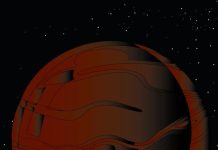
Scientists at New York University have developed a groundbreaking technique to look inside crystals, similar to having X-ray vision.
They call this new method “Crystal Clear.” This technique combines transparent particles, microscopes, and lasers to allow scientists to see every unit inside a crystal and create detailed three-dimensional models.
Professor Stefano Sacanna, a chemistry professor at NYU, led the study, which was published in the journal Nature Materials.
He explained, “Before, we could only see the surface of a crystal under a microscope. Now, we can see inside and know the exact position of every unit in the structure.”
Crystals are solid materials with atoms arranged in a repeating pattern. Sometimes, an atom is missing or out of place, creating a defect. These arrangements and defects give crystals their unique properties, whether they are table salt or diamonds.
Instead of studying atomic crystals, many scientists, including Sacanna, use crystals made of tiny spheres called colloidal particles. These particles are much larger than atoms but still very small, making them easier to see under a microscope.
To see inside these crystals, the team, led by Ph.D. student Shihao Zang, created transparent colloidal particles and added dye molecules to them. This made each particle visible under a microscope using fluorescence.
A regular microscope wasn’t enough to see inside the crystals, so the researchers used a technique called confocal microscopy. This technique uses a laser beam to scan through the material, producing targeted fluorescence from the dye molecules. This process reveals each two-dimensional layer of a crystal, which can be stacked to build a three-dimensional digital model. These models can be rotated, sliced, and examined to see any defects inside the crystals.
In one experiment, the researchers used this method on crystals that form when two of the same type of crystals grow together, known as “twinning.” They looked at models of crystals similar to table salt or an alloy of copper and gold and could see the shared plane of the joined crystals, a defect that creates their particular shapes. This shared plane showed the molecular origin of twinning.
The new technique also allows scientists to see how crystals change over time. For example, when crystals melt, do particles rearrange, and do defects move? In an experiment where the researchers melted a crystal with the structure of the mineral salt cesium chloride, they found that the defects stayed in place instead of moving around as expected.
To validate their findings, the team also used computer simulations to create crystals with the same characteristics. This confirmed that their “Crystal Clear” method accurately captured the internal structure of crystals.
Assistant Professor Glen Hocky, a co-author of the study, joked, “We’re trying to make our own simulations unnecessary—if you can see inside the crystal, you might not need simulations anymore.”
With this new method, scientists can study the chemical history of crystals and how they form more easily. This could lead to the development of better crystals and photonic materials that interact with light.
Professor Sacanna added, “Being able to see inside crystals gives us greater insight into the crystallization process and could help us improve the way we grow crystals by design.”
Source: NYU.



